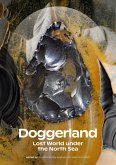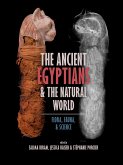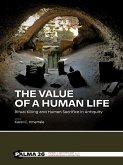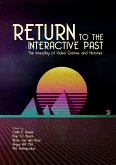'Well, as for Nineveh, skipper, it was wiped out long ago. There's not a trace of it left, and one can't even guess where it was' (Lucian, 2nd century AD).
Nineveh, the once-flourishing capital of the Assyrian Empire, has fascinated writers, travellers and historians alike since its complete annihilation by allied forces in 612 BC. It was said to have been a great and populous city with 90-km walls, stunning palaces and colossal statues of pure gold. Since 1842 archaeologists have been investigating the ruins of Nineveh, which are located on the eastern banks of the river Tigris, near the modern Iraqi city of Mosul. The hundreds of thousands of objects that have been collected tell an intriguing story of life and death in a remarkable Mesopotamian city.
The edited volume Nineveh, the Great City contains more than 65 articles by international specialists, providing the reader with a detailed and thorough study of the site of Nineveh. It describes the history of the city, the excavations and the dispersed material culture that can today be appreciated in more than 100 museums and institutes around the world. Special attention is paid to the endangered heritage of Nineveh, which recently faced destruction for the second time in its history.
This lavishly illustrated volume is intended to appeal to readers interested in culture and heritage, as well as to students and professional academics.
Contents
67 chapters are organized in 6 parts:
Part I: Nineveh, Famous but Lost
Part II: Investigating Nineveh:a Great Adventure
Part III: From Prehistory to the Arrival of the Neo-Assyrian Kings
Part IV: Neo-Assyrian Nineveh: the Largest City in the World
Part V: Nineveh after the Destruction in 612 BC
Part VI: The Material Culture of Nineveh
Hinweis: Dieser Artikel kann nur an eine deutsche Lieferadresse ausgeliefert werden.
Nineveh, the once-flourishing capital of the Assyrian Empire, has fascinated writers, travellers and historians alike since its complete annihilation by allied forces in 612 BC. It was said to have been a great and populous city with 90-km walls, stunning palaces and colossal statues of pure gold. Since 1842 archaeologists have been investigating the ruins of Nineveh, which are located on the eastern banks of the river Tigris, near the modern Iraqi city of Mosul. The hundreds of thousands of objects that have been collected tell an intriguing story of life and death in a remarkable Mesopotamian city.
The edited volume Nineveh, the Great City contains more than 65 articles by international specialists, providing the reader with a detailed and thorough study of the site of Nineveh. It describes the history of the city, the excavations and the dispersed material culture that can today be appreciated in more than 100 museums and institutes around the world. Special attention is paid to the endangered heritage of Nineveh, which recently faced destruction for the second time in its history.
This lavishly illustrated volume is intended to appeal to readers interested in culture and heritage, as well as to students and professional academics.
Contents
67 chapters are organized in 6 parts:
Part I: Nineveh, Famous but Lost
Part II: Investigating Nineveh:a Great Adventure
Part III: From Prehistory to the Arrival of the Neo-Assyrian Kings
Part IV: Neo-Assyrian Nineveh: the Largest City in the World
Part V: Nineveh after the Destruction in 612 BC
Part VI: The Material Culture of Nineveh
Hinweis: Dieser Artikel kann nur an eine deutsche Lieferadresse ausgeliefert werden.








